 June 20, 2019 John E. Ross, KD8IDJ, Editor
| ||||||
Internet Access to some ARRL Systems May Be Disrupted on June 23 Maintenance work on Sunday, June 23, may disrupt internet access to ARRL Headquarters systems -- including VPN connections and Logbook of The World. The main website should remain online during this outage, which could last for up to 6 hours on June 23, which will start at approximately midnight EDT (0400 UTC on June 24). All services will automatically resume as soon as connectivity is restored. Email should not be affected. Any orders placed via the ARRL Store during the outage will be queued for handling after connectivity returns. We apologize for any inconvenience. ARRL Executive Committee Establishes Ad Hoc Committee on Communications Meeting right after Dayton Hamvention® at the University of Dayton on May 20, the ARRL Board's Executive Committee (EC) adopted a motion to establish an Ad Hoc Committee on Communications with ARRL Members. The panel would review ARRL communications with members and members' perceptions to "consider areas needing enhancement," and it would "propose concrete changes in communication processes and methods by which improvements may be accomplished," according to the resolution. ARRL Vice President Greg Widin, K0GW, will chair the committee.
President Roderick, who chaired the EC meeting, said he remains concerned that Technician licensees, who make up more than half of the US Amateur Radio population, only comprise some 16% of ARRL members. The EC referred to the Administration and Finance (A&F) Committee for its consideration of a suggested graduated ARRL Life Membership dues reduction after an individual has reached a certain age. The EC asked the A&F Committee for recommendations to the full Board in January 2020. The Executive Committee expressed its thanks and extended its compliments to the ARRL staff and volunteers for "their outstanding work at the just-completed National Convention as part of Dayton Hamvention 2019." The minutes of the May 20 Executive Committee meeting have been posted on the ARRL website. ARRL Files Interim Report with FCC in "Symbol Rate" Proceeding ARRL has filed an interim report with the FCC in order to report on its efforts to find common ground regarding issues surrounding the "symbol" or "baud" rate proceeding, FCC Docket WT 16-239 (the FCC has issued a Notice of Proposed Rulemaking in WT 16-239, which stemmed from ARRL's rulemaking petition RM-11708). ARRL highlighted that the public benefits from the FCC's "fairly flexible" regulation of Amateur Radio, citing innovative developments in digital technology, including WSJT-X. Noting that more than 1,400 comments in total have been filed in this While a June 11 meeting organized by ARRL had to be reset to accommodate the invited parties, ARRL has re-affirmed its commitment to protecting the interests of all amateurs. ARRL said it will continue to pursue its efforts to address and reconcile differing opinions expressed in the two matters now pending before the FCC. LightSail 2 Set to Launch on June 22 The Planetary Society's citizen-funded LightSail 2 solar-propelled spacecraft is set to launch on June 22 on board a SpaceX Falcon Heavy. It will attempt the first controlled solar sail flight in Earth orbit. Scientific collaboration between The Planetary Society and Russia led to the creation of Cosmos 1, a solar sail spacecraft launched aboard a repurposed ICBM. But test flights in 2001 and 2005 failed due to problems with the launch vehicle. The first successful solar sail was launched by Japan in 2010, when the IKAROS spacecraft was deployed from a Venus-bound space probe. NASA has looked into using solar sails to de-orbit CubeSats with atmospheric drag, and its Nanosail-D2 mission in 2010 was successful. The Planetary Society's LightSail program was initiated a year earlier. It aimed to construct a CubeSat similar to Nanosail-D that would demonstrate true solar sailing. LightSail 1 snagged a slot aboard an Atlas V launch in 2015, LightSail 2 will be enclosed within Prox-1, a Georgia Tech student-built spacecraft the size of a small washing machine. Prox-1 will detach from the Falcon Heavy into a circular 720-kilometer orbit. A week later, it will deploy LightSail 2. The Doctor Will See You Now! The Doctor opens the Listener Mailbag in the new (June 20) episode of the ARRL The Doctor is In podcast. Listen...and learn!
Every 2 weeks, your host, QST Editor-in-Chief Steve Ford, WB8IMY, and the Doctor himself, Joel Hallas, W1ZR, will discuss a broad range of technical topics. You can also email your questions to doctor@arrl.org, and the Doctor may answer them in a future podcast. Enjoy ARRL The Doctor is In on Apple iTunes, or by using your iPhone or iPad podcast app (just search for ARRL The Doctor is In). You can also listen online at Blubrry, or at Stitcher (free registration required, or browse the site as a guest) and through the free Stitcher app for iOS, Kindle, or Android devices. If you've never listened to a podcast before, download our beginner's guide. ARRL, IARU Contingents to Attend HAM RADIO 2019 in Germany Delegations from ARRL and the International Amateur Radio Union (IARU) will attend HAM RADIO 2019, the popular international Amateur Radio exhibition in Friedrichshafen, Germany. Each year, a contingent from ARRL attends HAM RADIO, greeting its non-US members and networking with other national radio societies. Billed as ARRL representatives will include ARRL President Rick Roderick, K5UR; International Affairs Vice President Jay Bellows, K0QB, and ARRL staff members CEO Howard Michel, WB2ITX; Product Development Manager Bob Inderbitzen, NQ1R, and Regulatory Information Manager Dan Henderson, N1ND. Attending on behalf of the IARU are President Tim Ellam, VE6SH/G4HUA; Secretary David Sumner, K1ZZ, and past IARU Secretary and ARRL President (1995 - 2000) Rod Stafford, W6ROD. This year's event marks the 44th HAM RADIO exhibition and the 70th Lake Constance Convention of Radio Amateurs, sponsored by Germany's IARU member-society, the Deutscher Amateur Radio Club (DARC). The convention theme this year is "Amateur Radio on Tour." DARC Press Spokesperson Stephanie Heine, DO7PR, points out, "Radio amateurs know no bounds and are on land and water as well as in the air with their mobile 'ham radio shacks.' They like having the option of being reachable all over the world on their expeditions and getting to know new friends." Some 180 exhibitors and associations from 32 countries are expected to attend. In 2018, the event drew 15,460 visitors from 63 countries. Radio Amateur to Lose License as Part of Enforcement Case Settlement New Jersey radio amateur David S. Larsen, Sr., WS2L, of Highland Park, will surrender his Amateur Extra-class license and pay a $7,500 civil penalty as part of a Consent Decree with the FCC to settle an enforcement action. An FCC Enforcement Bureau Order released June 18 said Larsen violated the Communications Act of 1934 and Part 90 rules by operating on frequencies licensed to the Borough of Highland Park for public safety communication. As part of the settlement, Larsen admitted to making the unauthorized transmissions, and he agreed not to engage in unauthorized use of a radio station, and to surrender radios in his possession capable of transmitting on the town's public safety frequencies. If the Commission finds that The case stems from a May 2018 complaint of unauthorized transmissions on the Highland Park municipal radio system. FCC agents followed up with several visits to the town. "Based on information provided by the complainant and direct observations by the Bureau's agents, the unauthorized transmissions consisted of brief, pre-recorded sounds (such as the sad trombone sound)," the FCC said in the Consent Decree. The FCC said individuals the agents interviewed identified Larsen -- a former rescue squad volunteer -- as the person who was likely responsible. Responding to an FCC Letter of Inquiry, Larsen subsequently contacted the Enforcement Bureau and related that the unauthorized transmissions had ceased. Last fall, Larsen, responded to the inquiry through counsel to deny making the unauthorized transmissions. A short time later, the unauthorized transmissions resumed, and the FCC restarted its investigation, attempting to trace the source of the transmissions. Last March, agents used direction-finding equipment at a fixed location near the complainant's residence, while other agents conducted mobile direction finding of Larsen's vehicle in transit. "The four agents observed Mr. Larsen pull over to the side of the road on the way to his home," the Consent Decree recounts. "The four Bureau agents observed (a) that during the brief stop, Mr. Larsen remained in his vehicle, (b) while stopped, a brief transmission consisting of the sad trombone sound emanated from the direction of Mr. Larsen's vehicle on a frequency licensed for use by the Highland Park Radio System, and (c) following the transmission of the sad trombone sound, Mr. Larsen resumed his drive to his residence." The FCC said agents returned in April to observe Larsen repeat the earlier behavior, including a similar transmission emanating from Mr. Larsen's vehicle, according to the Decree. Pennsylvania Radio Amateur Dies in Tower Installation Mishap Well-known northeastern Pennsylvania radio amateur Leland L. "Lee" Parsons III, N3LPJ, lost his life on June 14 during a ham tower installation project when a tower section he was working on collapsed off State Route 2069 in Gibson Township. Authorities said Parsons, 62, was apparently attempting to attach a guy wire to the bottom tower section when it went over. An ARRL member, Parsons was the president of the Susquehanna County Amateur Radio Club.
The online Wireless Estimator called the incident "a stark reminder of the dangers present this weekend during Field Day." The article cited a 2009 Field Day tower collapse that claimed the life of 57-year-old Larry Prelog, KE4PM -- an experienced climber -- while he was installing an antenna. In that incident, two legs at the base of the tower buckled. The Wireless Estimator article also recalled the death of the Reverend Paul Bittner, W0AIH, 84, a well-known radio amateur, contester, and Field Day participant, who lost his life last October when he fell from one of the towers at his extensive antenna farm in Wisconsin. The K7RA Solar Update Tad Cook, K7RA, Seattle, reports: The quiet sun continues, with yet another week of zero sunspots. As of mid-week, that makes 32 days with no sunspot activity. So far this year, 62% of the days have been spotless, much the same as last year's 61%. The average daily solar flux over the past week was 67.1, down from 69 a week ago, and 69.5 2 weeks ago.
Predicted planetary A index is 12, 10, 8, 5, 8, 12, and 8 on June 20 - 26; 5 on June 27 - July 5; 8 on July 6; 5 on July 7 - 9; 8 on July 10 - 11; 5 and 8 on July 12 - 13; 12 on July 14 - 17; 10, 8, 5, 8, 12, and 8 on July 18 - 23; 5 on July 24 - August 1, then 8 and 5 on August 2 - 3. Sunspot numbers for June 13 through 19, 2019 were 0, 0, 0, 0, 0, 0, and 0, with a mean of 0. The 10.7 centimeter flux was 67.5, 68, 66.7, 65.9, 66.3, 67, and 68, with a mean of 69. Estimated planetary A indices were 10, 8, 4, 4, 3, 4, and 4, with a mean of 5.9. Middle latitude A index was 12, 13, 6, 6, 5, 3, and 4, with a mean of 6.3. A comprehensive K7RA Solar Update is posted Fridays on the ARRL website. For more information concerning radio propagation, visit the ARRL Technical Information Service, read "What the Numbers Mean...," and check out K9LA's Propagation Page. A propagation bulletin archive is available. Monthly charts offer propagation projections between the US and a dozen DX locations. Share your reports and observations. Just Ahead in Radiosport
See the ARRL Contest Calendar for more information. For in-depth reporting on Amateur Radio contesting, subscribe to The ARRL Contest Update via your ARRL member profile email preferences. Historic 2-Meter Transatlantic Contact Reported D41CV on Cape Verde Islands and FG8OJ in Guadeloupe spanned the Atlantic Ocean on 2 meters for the first time on June 16, according to reports. The distance was 3,867 kilometers (2,397.5 miles). The historic contact was made on 144.174 MHz using FT8 mode. "The mode of propagation was most likely marine ducting, with the signal traveling in a layer near the ocean surface," said John "Now that this historic contact has been made, more 144 MHz contacts across this part of the Atlantic are sure to follow," Desmond said. The initial contact does not qualify for the Brendan Trophies and Brendan Shields awards, because they require a valid contact to be made between Europe and the Americas on 2 meters. The distance covered, however, was greater than the distance between Ireland and Newfoundland. "We continue to write a part of the history and to push barriers further away," a post on the D4C VHF & Up Facebook page said. ARRL ARDF Coordinator Steps Down, New Coordinator Named ARRL Amateur Radio Direction Finding (ARDF) Coordinator Joe Moell, K0OV, is stepping down after more than 20 years on the job. Since he became ARRL ARDF Coordinator in February 1998, Moell said the sport of on-foot transmitter hunting under international rules has grown steadily in participation and popularity. Since 2001, beginners and experts alike have gathered each year for the USA Championships of ARDF.
ARRL President Rick Roderick, K5UR, has appointed Jerry Boyd, WB8WFK, of Albuquerque, New Mexico, as the new ARRL ARDF Coordinator, effective on July 1. Boyd has been involved in ARDF for many years and has been a frequent medal winner at USA's championships. He headed the team of organizers for the 2002, 2005, and 2011 USA and IARU Region 2 ARDF Championships, held in his hometown. He was on Team USA for the 2004, 2006, and 2010 ARDF World Championships. Boyd also holds an appointment as ARRL Official Observer Coordinator for the New Mexico Section. The ARRL ARDF Coordinator is responsible for overseeing the selection of Team USA members for the World ARDF Championships
in even-numbered years, selecting the location and organizers of the annual USA ARDF Championships, and working with coordinators and working groups of other nations and IARU regions to schedule activities and develop rule updates, among other activities. As Boyd prepares to take the reins, President Roderick has expressed gratitude for all Moell has done for the advancement of ARDF. Moell will continue posting radio-orienteering event news and photos on his Homing In website and participating with other southern California ARDF enthusiasts. He expressed his appreciation for the efforts of all who have worked to make ARDF practices and competitions available to aspiring champions. "ARDF has moved from a novelty into the mainstream of Amateur Radio," he said. "It is recognized as an ideal way to interest young people in our hobby and to get them started. Please keep up the good work." Read more. Morse Code is Still a Hit The music lyrics website Genius came up with an ingenious way of determining if other sites -- specifically Google -- had been lifting song lyrics directly from its site and reposting them without permission. According to the Wall Street Journal, starting in 2016, Genius strategically placed both straight and curly apostrophes in their rendering of a song's lyrics. "Over the last two years, we've shown Google irrefutable evidence again and again that they are displaying lyrics copied from Genius," Genius's chief strategy officer Ben Gross told the Wall Street Journal. "We noticed that Google's lyrics matched our lyrics down to the character." The Wall Street Journal corroborated the accusations by matching the results of three songs randomly chosen from the list of 100 instances. Google denied the allegations through its partnership with LyricFind, which provides the search engine with lyrics through a deal with music publishers. "We do not source lyrics from Genius," LyricFind Chief Executive Darryl Ballantyne said. -- Thanks to Rolling Stone and other media reports In Brief...
Upcoming ARRL Section, State, and Division Conventions
Find conventions and hamfests in your area.
. .
Subscribe to...
Free of charge to ARRL members...
| ||||||
 In his remarks to the EC, President Rick Roderick, K5UR, said he's been receiving positive feedback from members. He also reported receiving numerous questions regarding the Amateur Radio Parity Act. He stressed that ARRL needs to assure members that it has not given up on the initiative, which was put on hold earlier this year. At the same meeting, ARRL Pacific Division Director Jim Tiemstra, K6JAT, updated the EC on efforts to reassess the Amateur Radio Parity Act. He said the Board's Legislative Committee is working on a plan of action to go before the full Board at its July meeting.
In his remarks to the EC, President Rick Roderick, K5UR, said he's been receiving positive feedback from members. He also reported receiving numerous questions regarding the Amateur Radio Parity Act. He stressed that ARRL needs to assure members that it has not given up on the initiative, which was put on hold earlier this year. At the same meeting, ARRL Pacific Division Director Jim Tiemstra, K6JAT, updated the EC on efforts to reassess the Amateur Radio Parity Act. He said the Board's Legislative Committee is working on a plan of action to go before the full Board at its July meeting.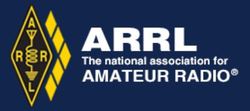 and on a related rulemaking petition (
and on a related rulemaking petition ( LightSail 1 successfully completed its test flight mission in 2015. LightSail® is aimed at testing "
LightSail 1 successfully completed its test flight mission in 2015. LightSail® is aimed at testing " but the target orbit was not high enough for solar sailing thrust to overcome atmospheric drag. The Planetary Society accepted the free ride anyway and successfully tested the spacecraft's sail deployment mechanism.
but the target orbit was not high enough for solar sailing thrust to overcome atmospheric drag. The Planetary Society accepted the free ride anyway and successfully tested the spacecraft's sail deployment mechanism. Sponsored by
Sponsored by 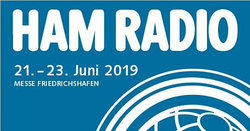 Europe's biggest Amateur Radio convention, HAM RADIO 2019 takes place June 21 - 23 on the shores of Lake Constance.
Europe's biggest Amateur Radio convention, HAM RADIO 2019 takes place June 21 - 23 on the shores of Lake Constance..jpg) Larsen makes unauthorized radio transmissions or otherwise violates the terms of the Consent Decree, he'll be subject to an additional $32,500 civil penalty. The agreement stipulates that Larsen may not apply for a new Amateur Radio license for 3 years.
Larsen makes unauthorized radio transmissions or otherwise violates the terms of the Consent Decree, he'll be subject to an additional $32,500 civil penalty. The agreement stipulates that Larsen may not apply for a new Amateur Radio license for 3 years..JPG)
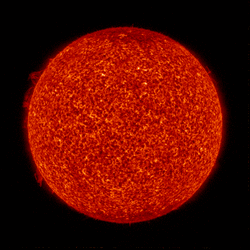 Predicted solar flux over the next 45 days is 67 on June 20 - 27; 69 on June 28 - July 4; 68 on July 5 - 6; 69 on July 7 - 9; 68 on July 10 - 11; 67 and 66 on July 12 - 13; 67 on July 14 - 20; 68 on July 21 - 24; 69 on July 25 - 31; 68 on August 1 - 2, and 69 on August 3.
Predicted solar flux over the next 45 days is 67 on June 20 - 27; 69 on June 28 - July 4; 68 on July 5 - 6; 69 on July 7 - 9; 68 on July 10 - 11; 67 and 66 on July 12 - 13; 67 on July 14 - 20; 68 on July 21 - 24; 69 on July 25 - 31; 68 on August 1 - 2, and 69 on August 3.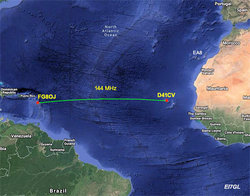 Desmond, EI7GL, who was among those
Desmond, EI7GL, who was among those 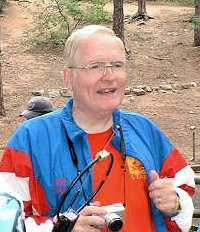
.JPG)
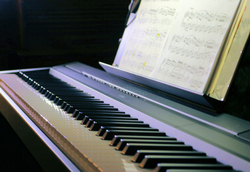 When converted into Morse code, the rigged punctuation spells out the words "red handed." Genius claims it's uncovered more than 100 instances where Google used Genius's own lyrics in Google search results.
When converted into Morse code, the rigged punctuation spells out the words "red handed." Genius claims it's uncovered more than 100 instances where Google used Genius's own lyrics in Google search results..jpg) ARRL has produced a downloadable video,
ARRL has produced a downloadable video, 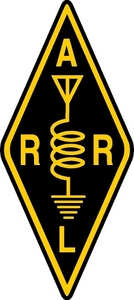 Paul Stiles, KF7SOJ, will become ARRL Montana Section Manager on October 1. Stiles, of Billings, was the only candidate after nominations for the position were re-solicited this spring, and will serve an 18-month term. He will take over the position following George Forsyth, AA7GS, of Great Falls, who decided not to run for a new term after serving since 2013. There are no contested seats in the summer SM election cycle. These incumbent Section Managers had no opposition and were declared re-elected to start new terms on October 1: Jack Ciaccia, WM0G (Colorado); Jack Tiley, AD7FO (Eastern Washington); David Benoist, AG4ZR (Georgia); Diana Feinberg, AI6DF (Los Angeles); Carol Milazzo, KP4MD (Sacramento Valley); Bill Hillendahl, KH6GJV (San Francisco); Paul Gilbert, KE5ZW (South Texas); Dan Ringer, K8WV (West Virginia), and Monte Simpson, AF7PQ (Western Washington).
Paul Stiles, KF7SOJ, will become ARRL Montana Section Manager on October 1. Stiles, of Billings, was the only candidate after nominations for the position were re-solicited this spring, and will serve an 18-month term. He will take over the position following George Forsyth, AA7GS, of Great Falls, who decided not to run for a new term after serving since 2013. There are no contested seats in the summer SM election cycle. These incumbent Section Managers had no opposition and were declared re-elected to start new terms on October 1: Jack Ciaccia, WM0G (Colorado); Jack Tiley, AD7FO (Eastern Washington); David Benoist, AG4ZR (Georgia); Diana Feinberg, AI6DF (Los Angeles); Carol Milazzo, KP4MD (Sacramento Valley); Bill Hillendahl, KH6GJV (San Francisco); Paul Gilbert, KE5ZW (South Texas); Dan Ringer, K8WV (West Virginia), and Monte Simpson, AF7PQ (Western Washington). 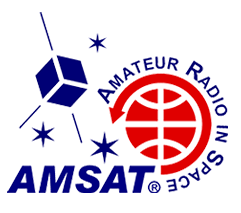 AMSAT has announced Field Day on the Satellites. June 22 - 23 is ARRL Field Day weekend, and each year AMSAT promotes its own concurrent event, focused on operation via the amateur satellites. ARRL Field Day offers bonus points for making a contact via satellite. The AMSAT Field Day 2019 event is open to all radio amateurs, and the AMSAT Field Day exchange is the same as that for ARRL Field Day. To reduce congestion, participants are limited to one contact per FM satellite, including the ISS.
AMSAT has announced Field Day on the Satellites. June 22 - 23 is ARRL Field Day weekend, and each year AMSAT promotes its own concurrent event, focused on operation via the amateur satellites. ARRL Field Day offers bonus points for making a contact via satellite. The AMSAT Field Day 2019 event is open to all radio amateurs, and the AMSAT Field Day exchange is the same as that for ARRL Field Day. To reduce congestion, participants are limited to one contact per FM satellite, including the ISS. 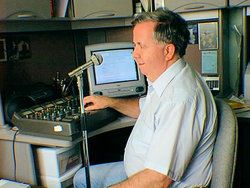 Ham Radio Newscast Producer Hap Holly, KC9RP, and The RAIN Report have retired. Holly has been producing the
Ham Radio Newscast Producer Hap Holly, KC9RP, and The RAIN Report have retired. Holly has been producing the 







